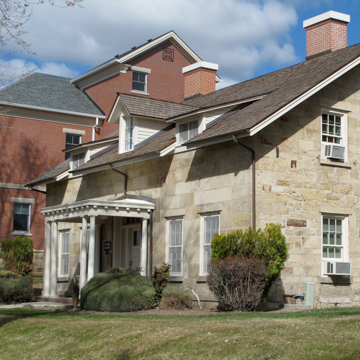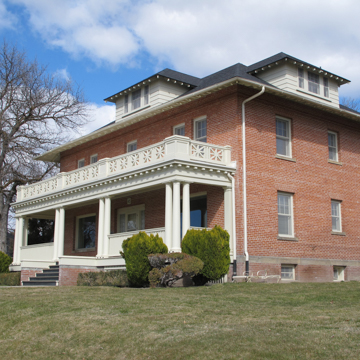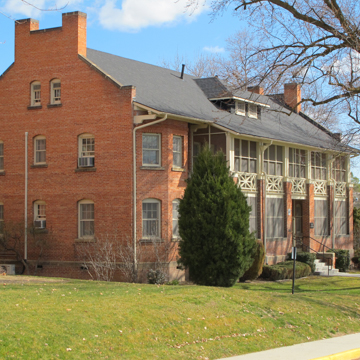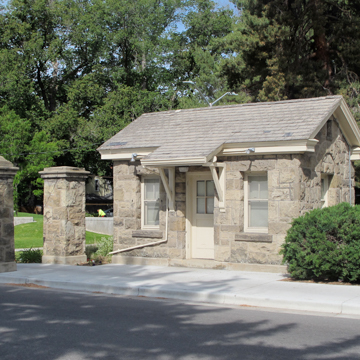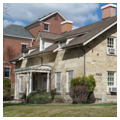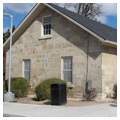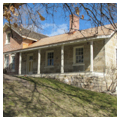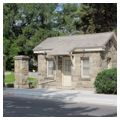You are here
Boise VA Medical Center
Fort Boise was a military post established in 1863. This is not to be confused with another site, also known as Fort Boise, which was built in 1834 by the Hudson Bay Company near the convergence of the Boise and Snake rivers; this site was abandoned in 1854. The new Fort Boise was founded fifty miles upriver, near the intersection of the Oregon Trail and the roads leading to the Boise Basin gold mining areas. As the Oregon Trail continued to attract thousands of pioneers, tensions grew between the Native American tribes and settlers traveling through the Idaho Territory. By October 10, 1860, the federal government ordered General George Wright of Fort Vancouver, Washington Territory, to build a new military fort.
The outbreak of the Civil War delayed construction, but a gold strike two years later in nearby Idaho City resulted in an influx of miners to the area. The government’s desire to keep settlers and miners safe and, significantly, to protect the gold that would be transported to Washington, D.C., resulted in renewed efforts to construct a fort in 1863. Major Pinkney Lugenbeel was dispatched from Fort Vancouver with three infantry companies to head east and select the site for the new fort. Lugenbeel and his troops selected a one-square-mile site, with ample grass, water, wood, and stone, on sloping land overlooking the Boise River.
By 1864, the fort included a parade ground surrounded by nineteen buildings, which were erected by the military alongside local workers. Within months, ten city blocks were also laid out just south of the fort, in the newly founded city of Boise; these blocks guided development of what would later become Idaho’s capital. As the fort’s buildings sprung up, they were numbered in the order of completion. These early buildings were constructed of locally quarried sandstone. Building No. 1 (1864), the officers’ dwelling, features a symmetrical plan with three dormer windows facing the street of Officer’s Row; its porch, built in the classical style, set a precedent for future housing. Building No. 4 is another survivor from the earliest period. The two-story brick building, with its gable end facing the street, also features a one-story sandstone wing parallel to the street. Known as the Surgeon’s House, it dates to 1870. This building received considerable attention and restoration work from local preservationists between 2000 and 2012. Building No. 6, the post quartermaster building, located below the parade ground, is also well preserved and is representative of the fort’s simple, utilitarian buildings. Of special note is a carved inscription in the north gable bearing the date Sep. 1, 1864.
On April 5, 1879, Fort Boise’s name was changed to Boise Barracks and the fort became a center of Boise’s social activities as the site of performances, festivals, and religious events and services. New brick officers’ quarters were constructed along the upper end of the parade ground, still known as Officers’ Row. Several examples remain of these new, substantial brick structures with elegant Federal-style porches. Additional service buildings were also constructed during this time. In 1913, the government abandoned the fort, although it was briefly occupied by soldiers in 1916 during the Mexican Border Campaign, and again during World War II.
The Public Health Service occupied the fort beginning in the 1920s, and it has served as a Veterans Hospital ever since. By March 14, 1944, the site was handed to the state of Idaho, and it became the Veterans Administration Center on May 16, 1955. Since then, the campus buildings have been renovated. Only a small portion of the original military post was developed and recent years have seen an Elk’s Hospital and a federal building constructed along the southern border of the former military reservation.
References
Jensen, Erica, and Judith Austin, eds. Shaping Boise: A Selection of Boise’s Landmark Buildings.Boise, ID: City of Boise, Department of Planning and Development Services, 2010.
Neil, J. Meredith. Saints and Oddfellows: A Bicentennial Sampler of Idaho Architecture.Boise, ID: Boise Gallery of Art Association, 1976.
Webb, Anna. 150 Boise Icons to Celebrate the City’s Sesquicentennial. Boise: Idaho Statesman, 2013.
Writing Credits
If SAH Archipedia has been useful to you, please consider supporting it.
SAH Archipedia tells the story of the United States through its buildings, landscapes, and cities. This freely available resource empowers the public with authoritative knowledge that deepens their understanding and appreciation of the built environment. But the Society of Architectural Historians, which created SAH Archipedia with University of Virginia Press, needs your support to maintain the high-caliber research, writing, photography, cartography, editing, design, and programming that make SAH Archipedia a trusted online resource available to all who value the history of place, heritage tourism, and learning.





